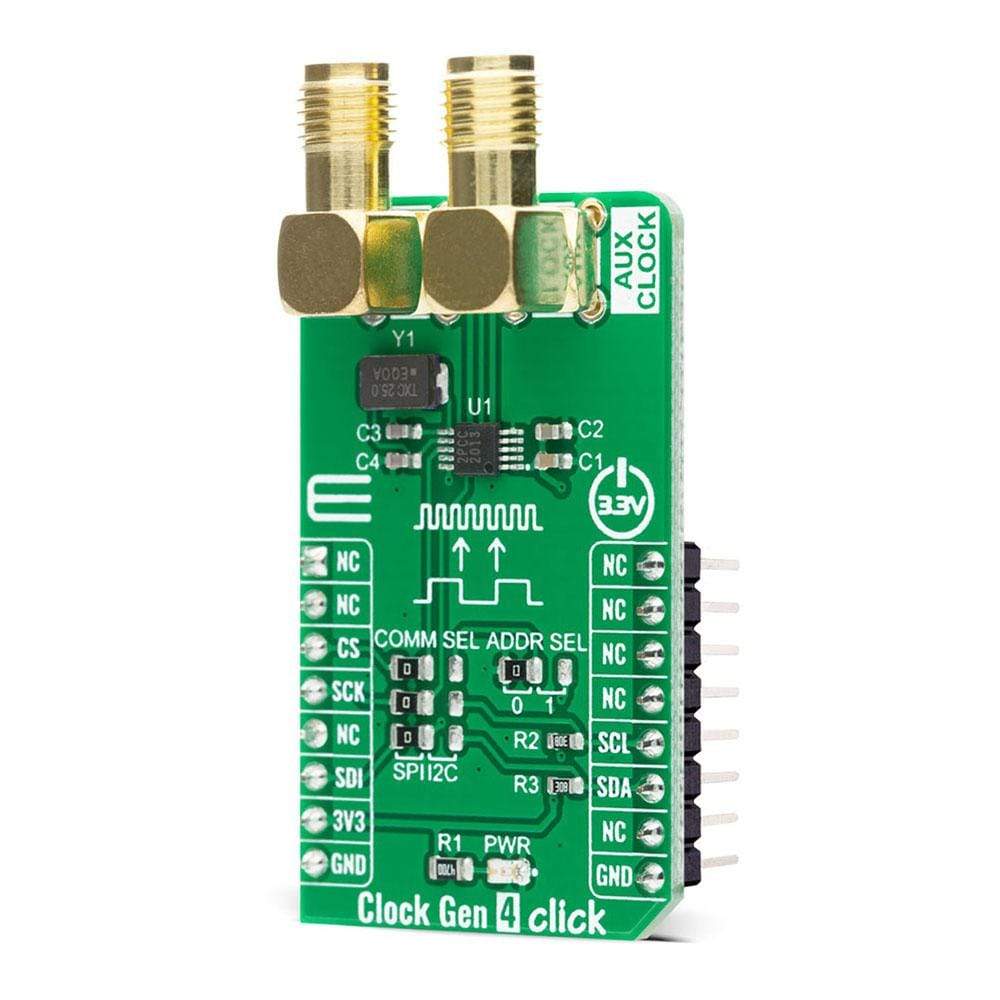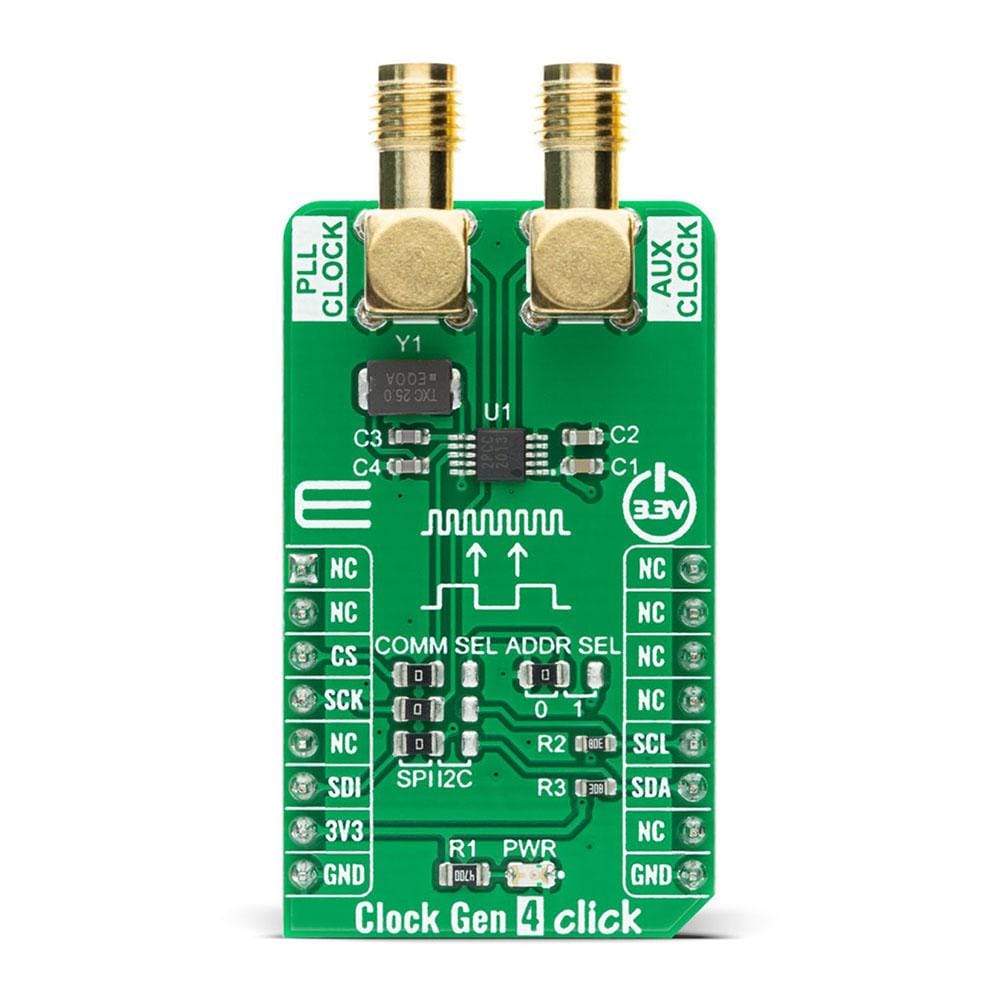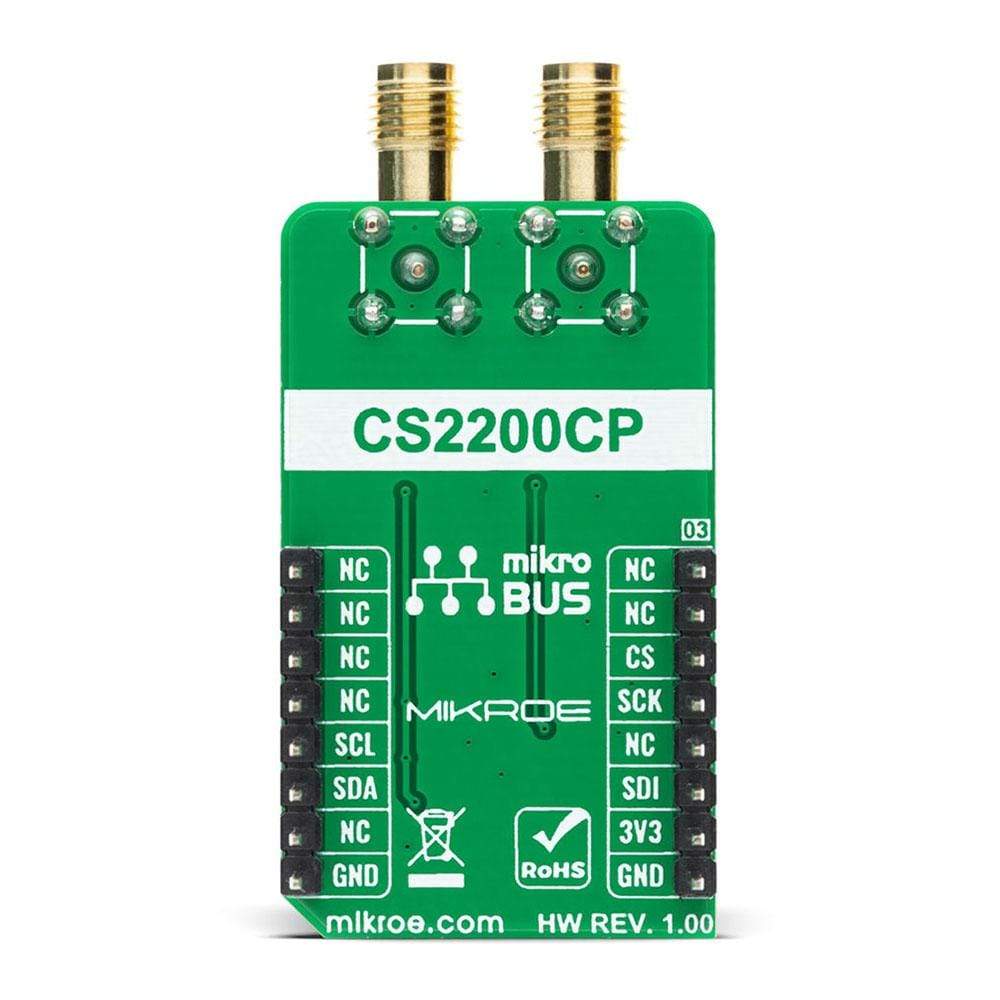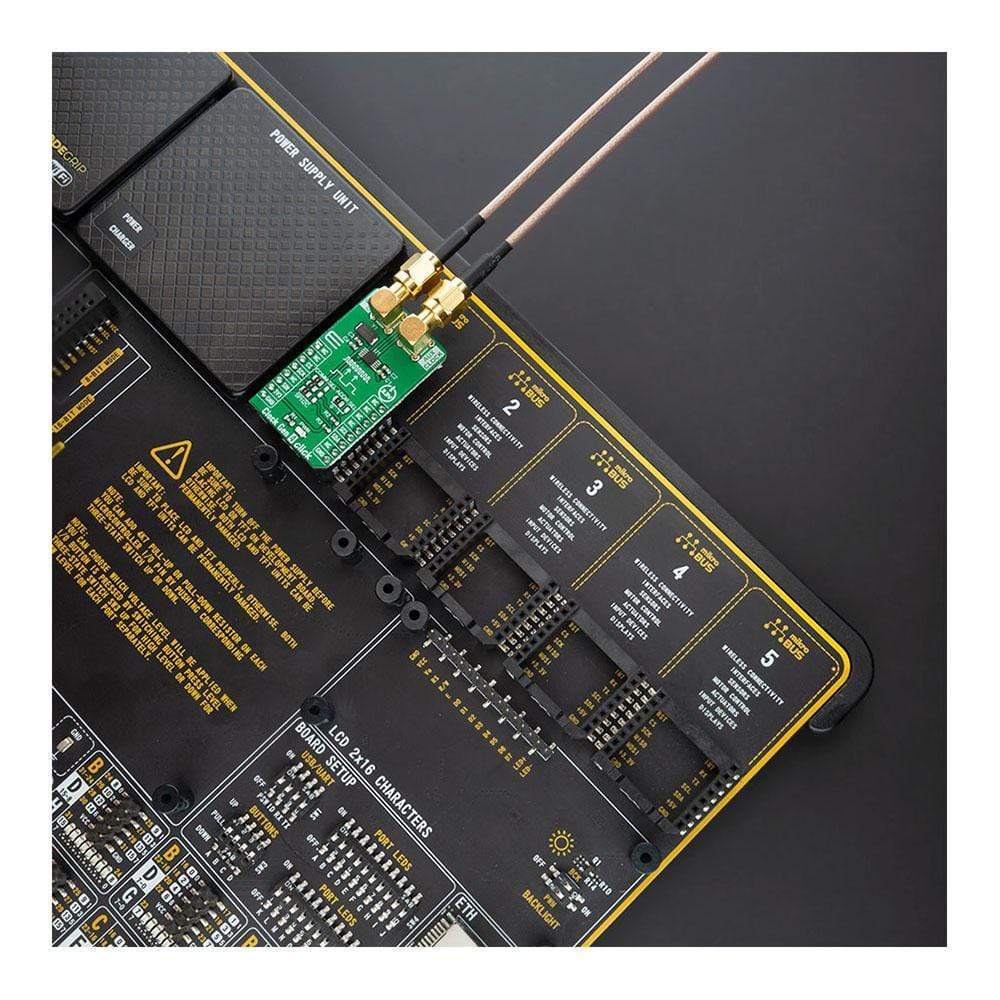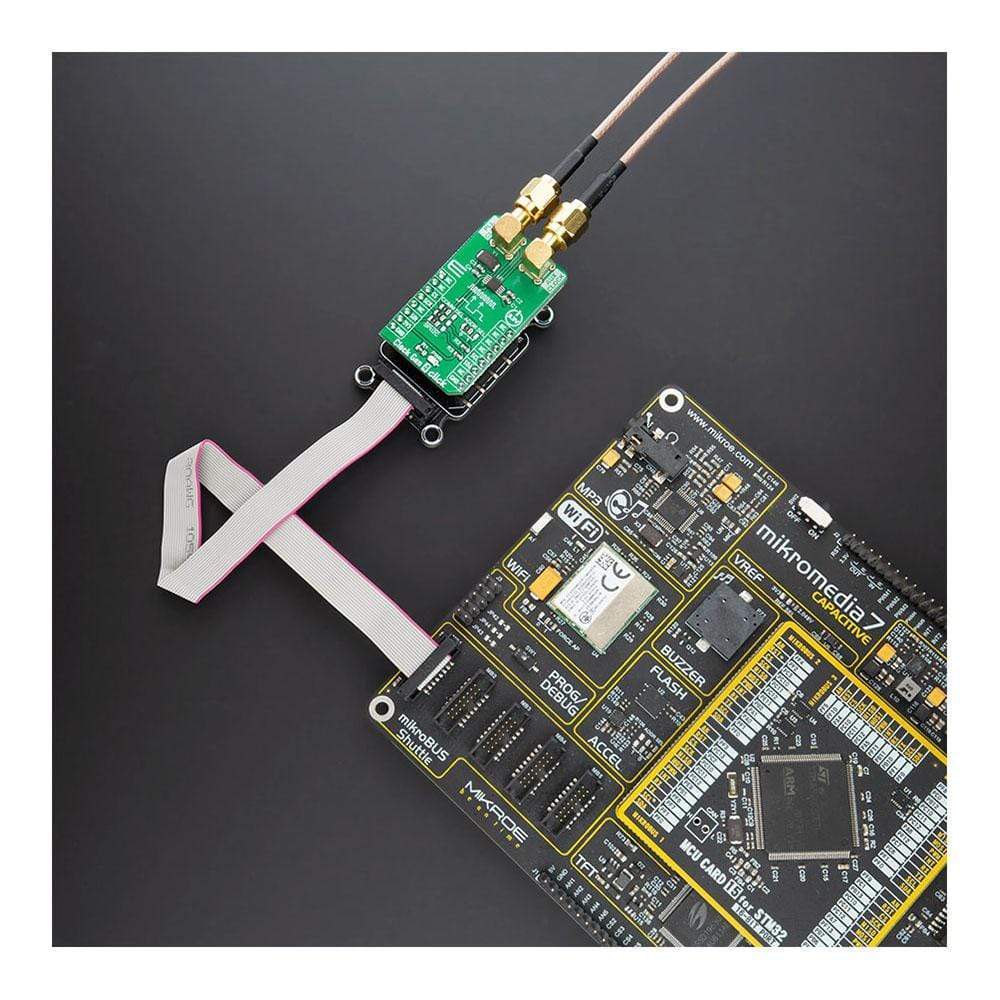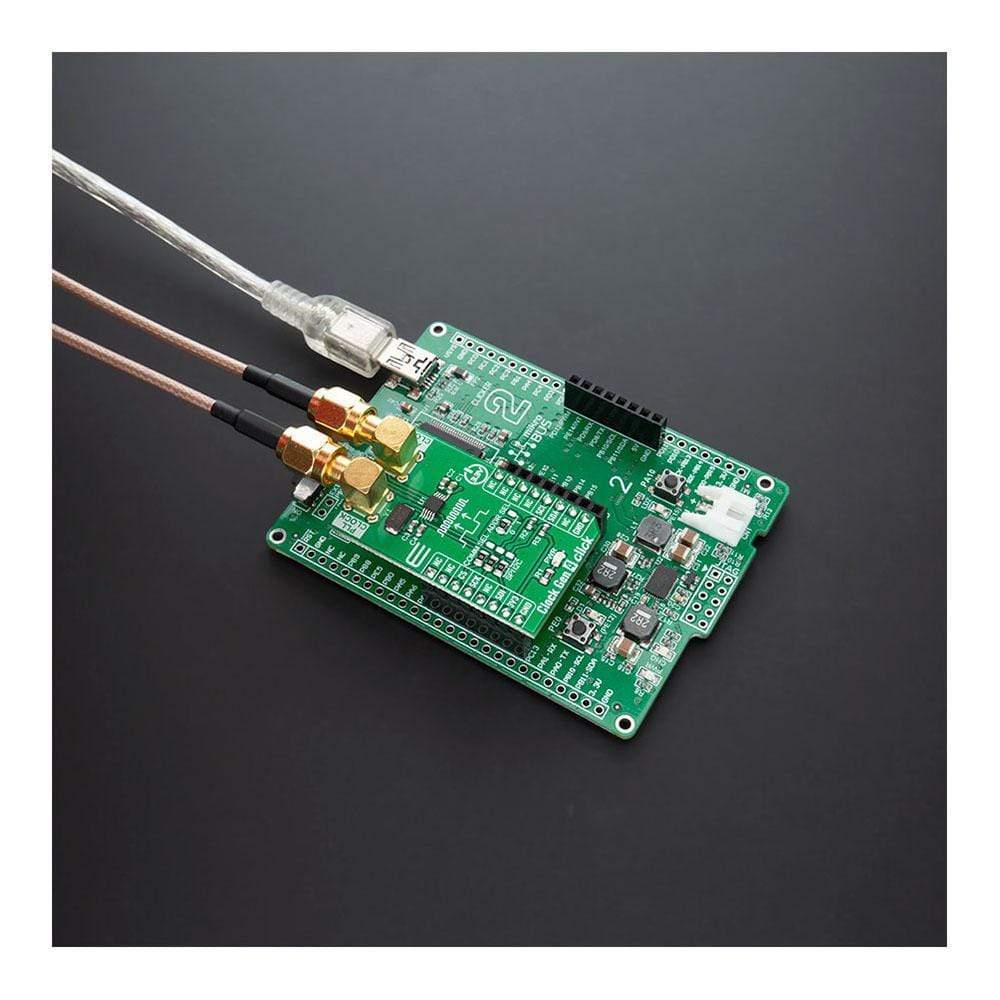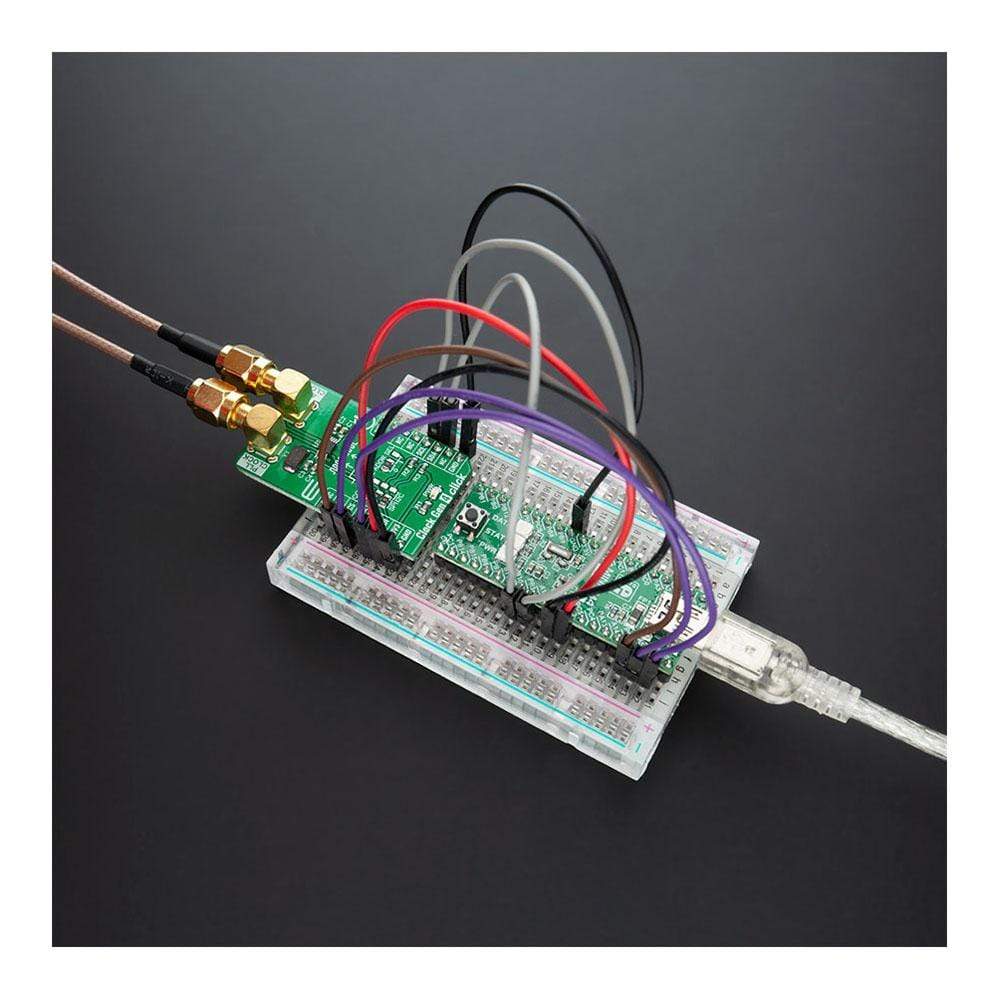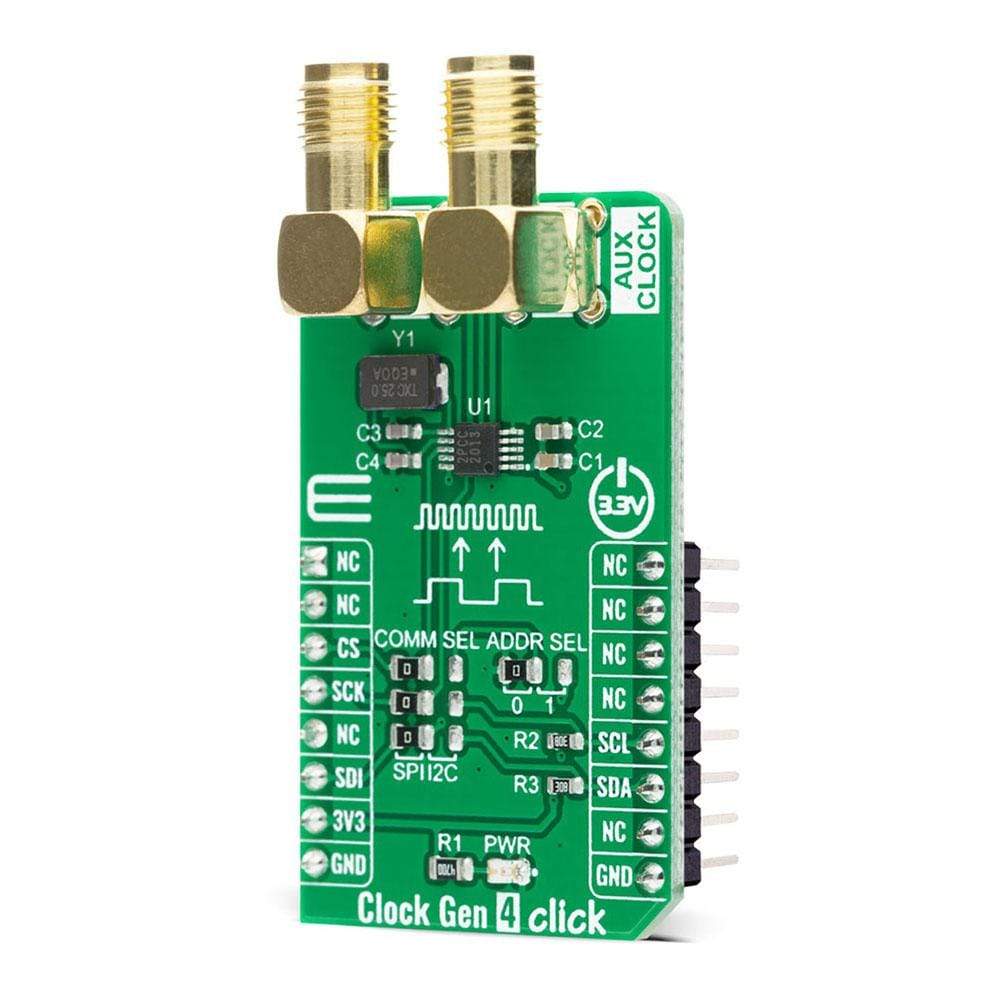
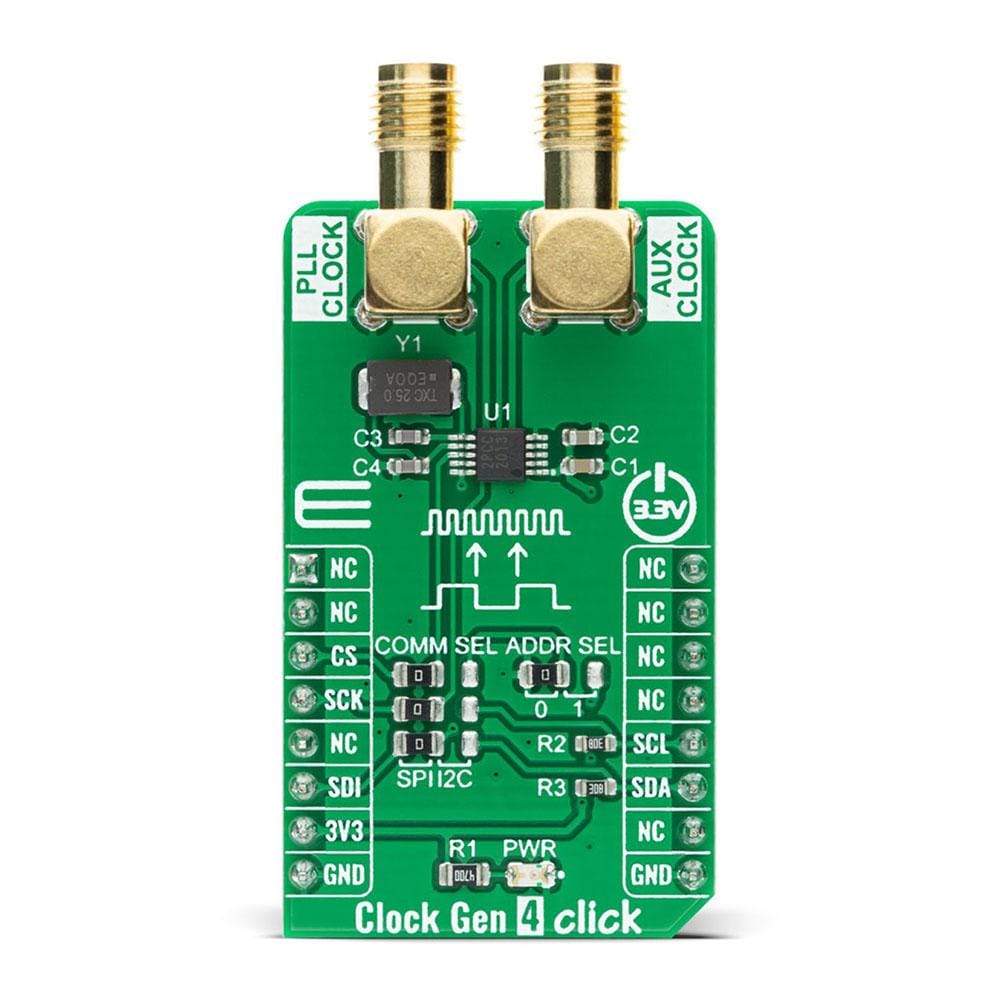
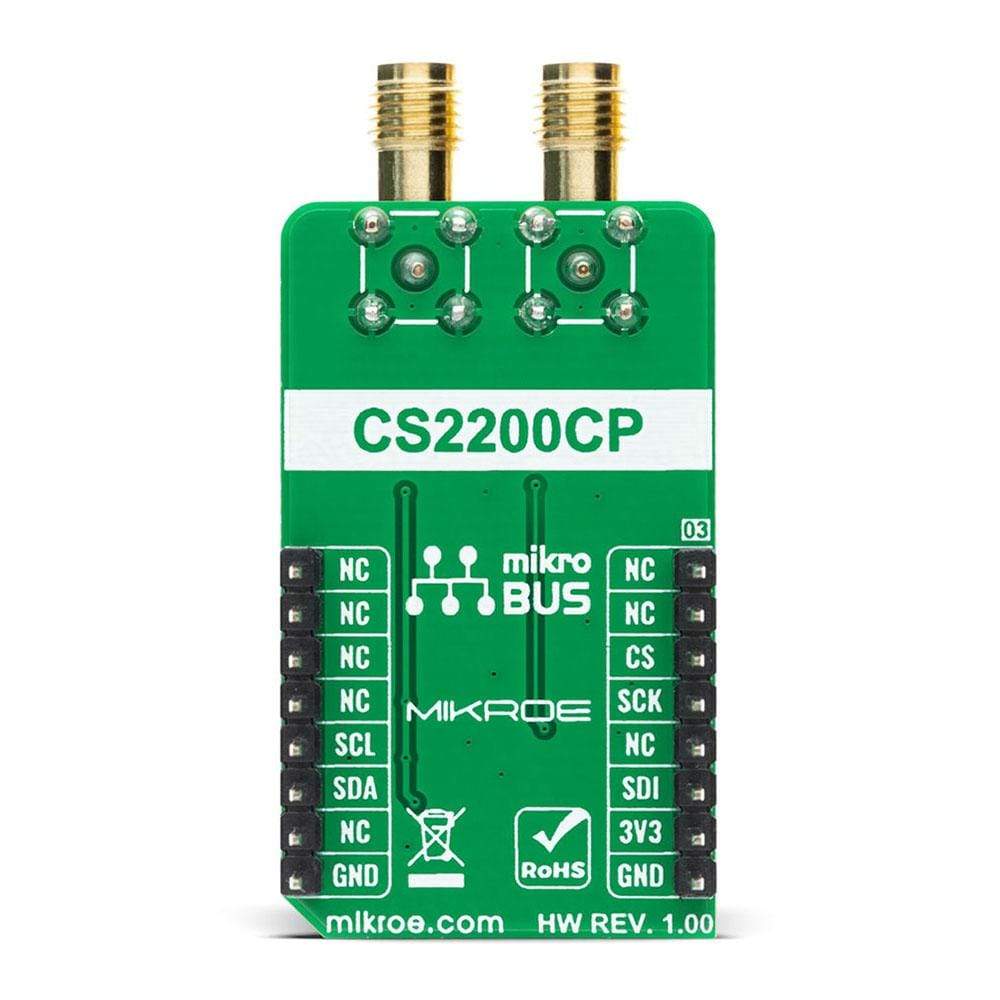
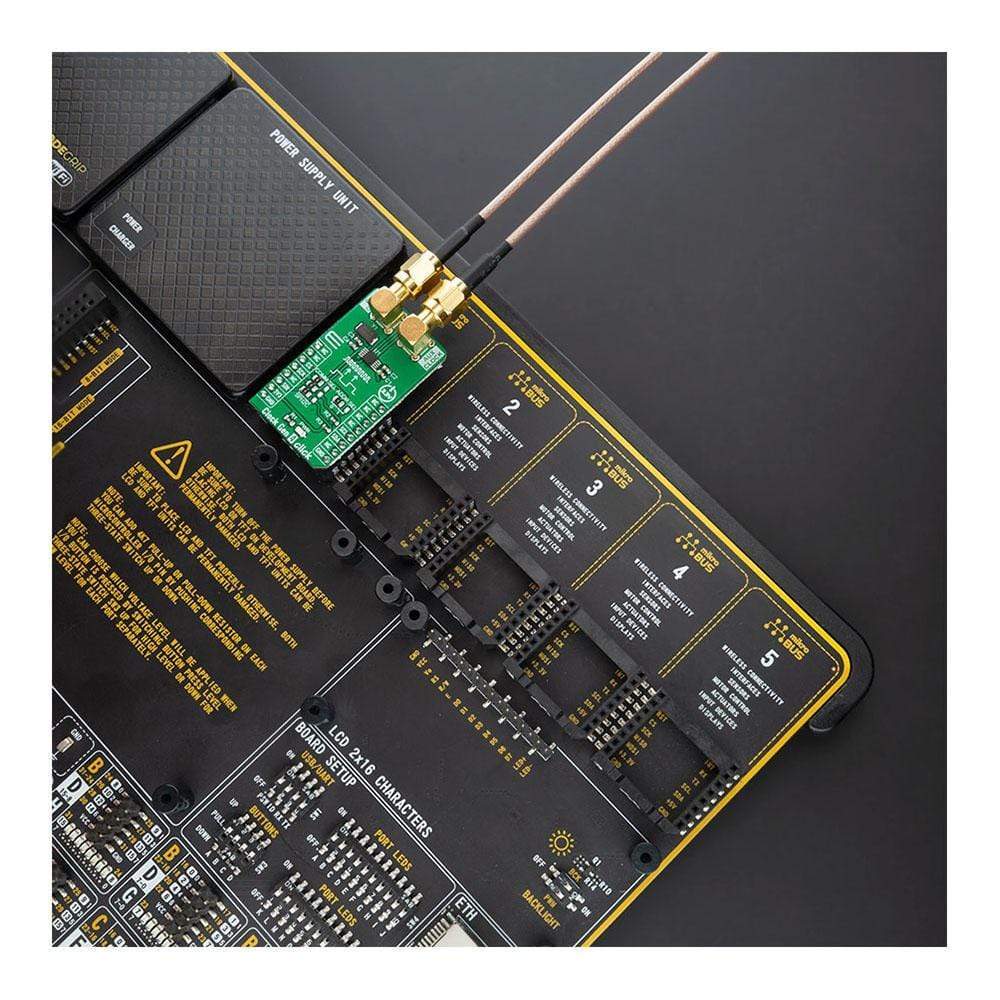
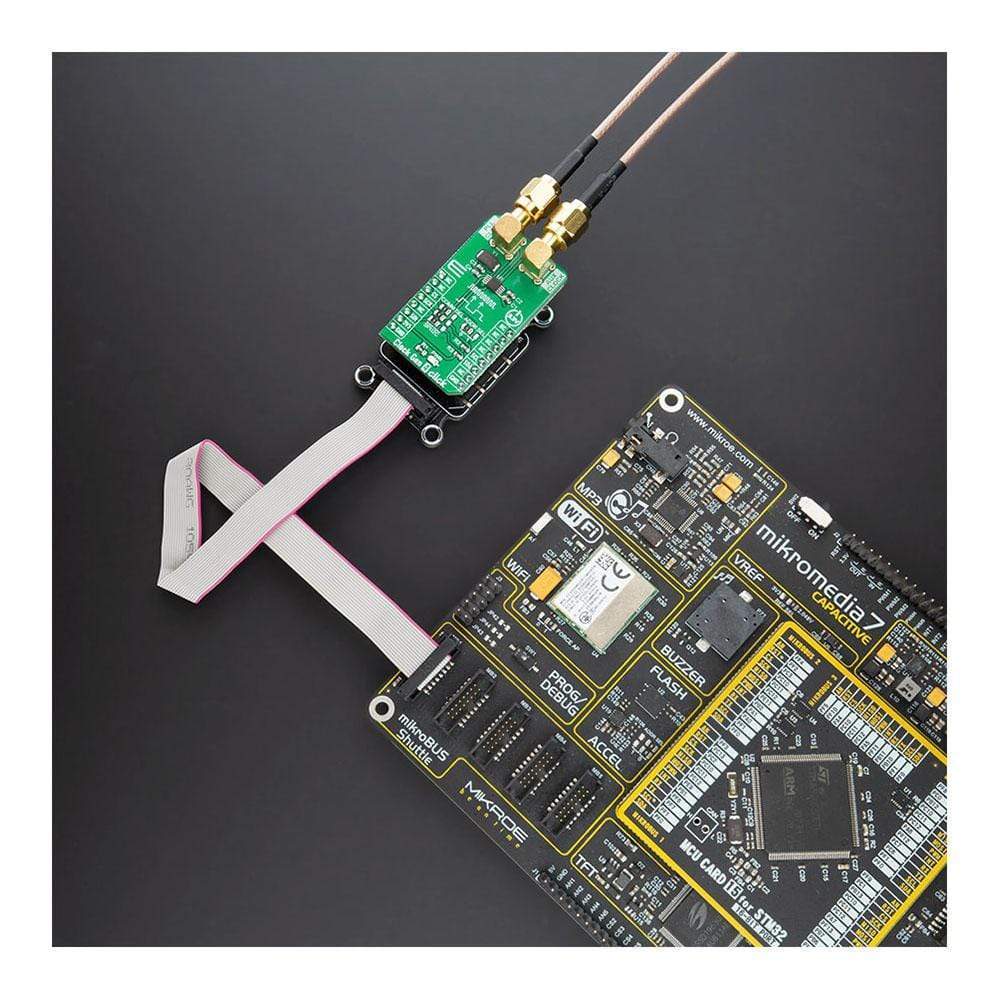
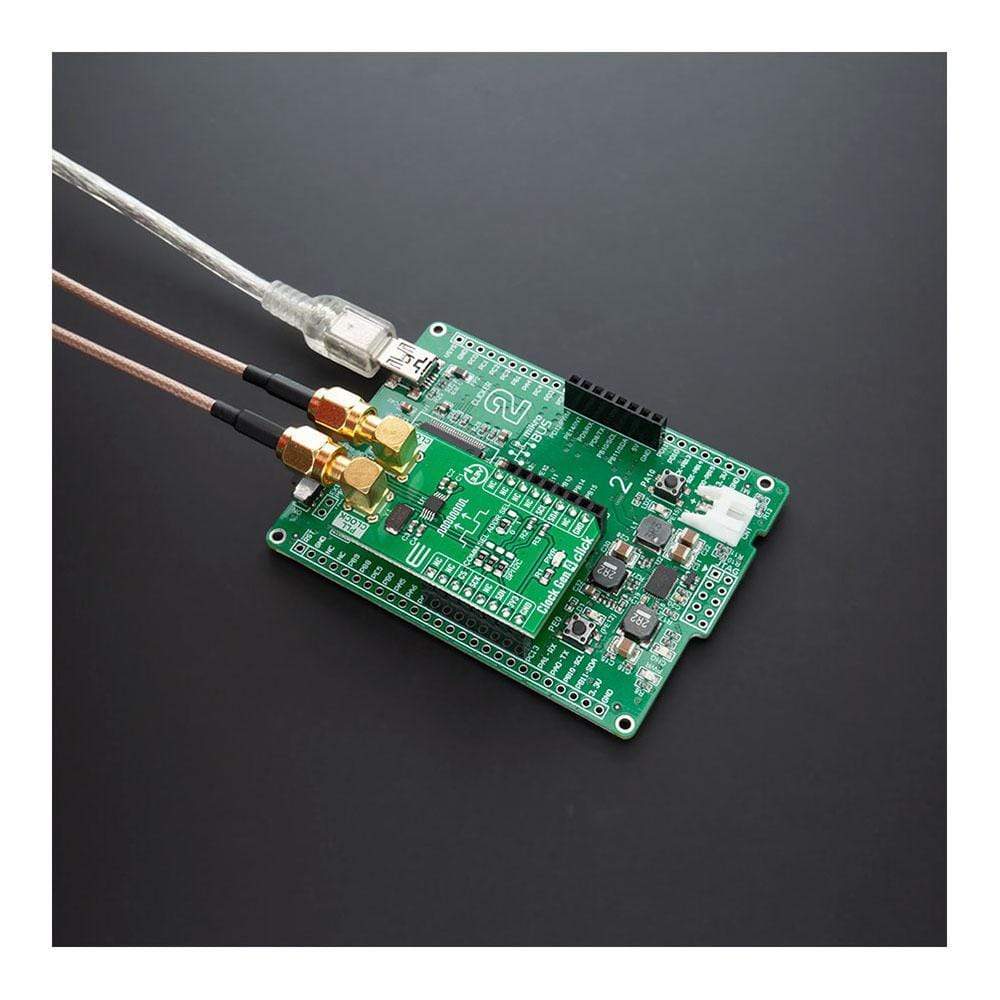
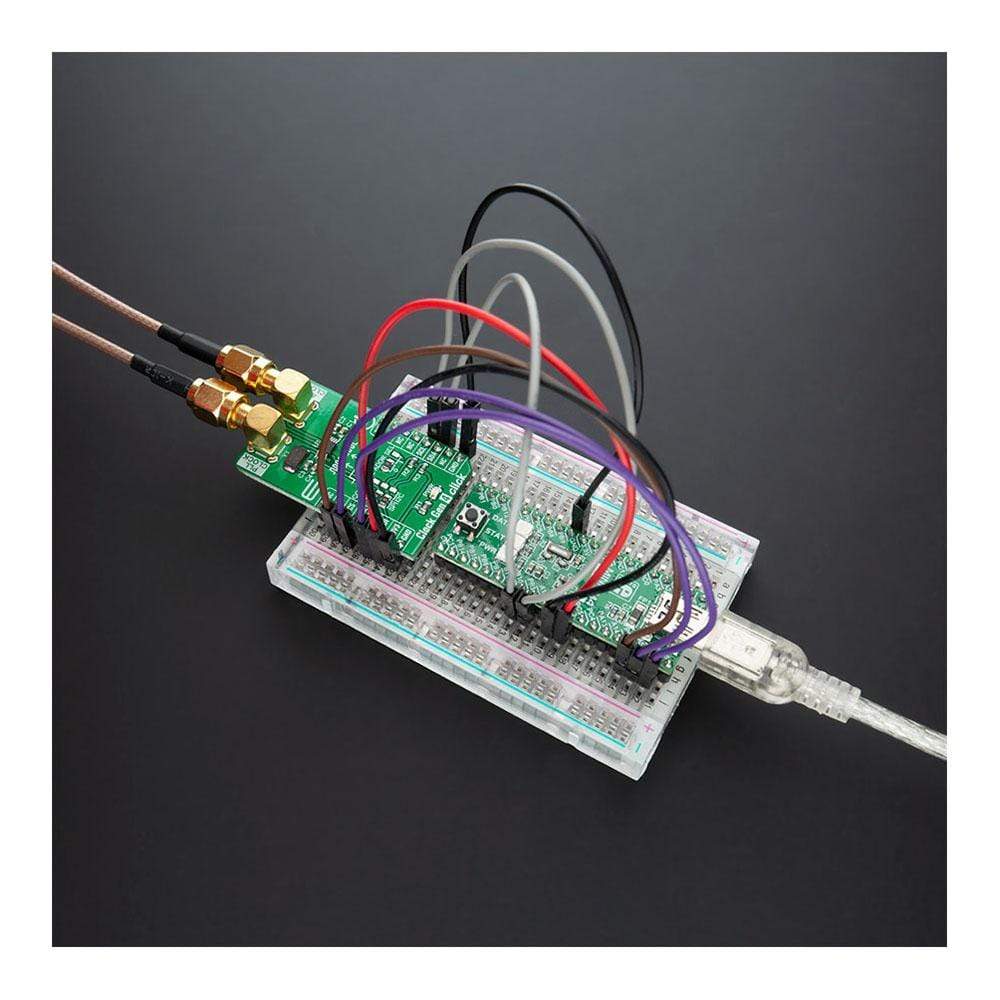
Overview
The Clock Gen 4 Click Board™ is a compact add-on board that contains both a clock generator and a multiplier/jitter reduced clock frequency synthesizer. This board features the CS2200-CP, an analogue PLL architecture comprised of a Delta-Sigma fractional-N frequency synthesizer from Cirrus Logic. This clocking device utilizes a programmable phase lock loop and allows frequency synthesis and clock generation from a stable reference clock. It generates a low-jitter PLL clock from an external crystal, supports both I²C and SPI for full software control, and also has configurable auxiliary clock output. This Click Board™ is suitable for MCU clock source, or in applications like digital effects processors, digital mixing consoles, and many more.
The Clock Gen 4 Click Board™ is supported by a mikroSDK compliant library, which includes functions that simplify software development. This Click Board™ comes as a fully tested product, ready to be used on a system equipped with the mikroBUS™ socket.
Downloads
Das Clock Gen 4 Click Board™ ist eine kompakte Zusatzplatine, die sowohl einen Taktgenerator als auch einen Multiplikator/Jitter-reduzierten Taktfrequenzsynthesizer enthält. Diese Platine verfügt über den CS2200-CP, eine analoge PLL-Architektur, die aus einem Delta-Sigma-Fractional-N-Frequenzsynthesizer von Cirrus Logic besteht. Dieses Taktgerät verwendet eine programmierbare Phasenregelschleife und ermöglicht Frequenzsynthese und Taktgenerierung aus einem stabilen Referenztakt. Es generiert einen PLL-Takt mit geringem Jitter aus einem externen Kristall, unterstützt sowohl I²C als auch SPI für die vollständige Softwaresteuerung und verfügt außerdem über einen konfigurierbaren Hilfstaktausgang. Dieses Click Board™ ist für MCU-Taktquellen oder für Anwendungen wie digitale Effektprozessoren, digitale Mischpulte und viele mehr geeignet.
Das Clock Gen 4 Click Board™ wird von einer mikroSDK-kompatiblen Bibliothek unterstützt, die Funktionen enthält, die die Softwareentwicklung vereinfachen. Dieses Click Board™ wird als vollständig getestetes Produkt geliefert und ist bereit für den Einsatz auf einem System, das mit der mikroBUS™-Buchse ausgestattet ist.
| General Information | |
|---|---|
Part Number (SKU) |
MIKROE-4300
|
Manufacturer |
|
| Physical and Mechanical | |
Weight |
0.023 kg
|
| Other | |
Country of Origin |
|
HS Code Customs Tariff code
|
|
EAN |
8606027380877
|
Warranty |
|
Frequently Asked Questions
Have a Question?
Be the first to ask a question about this.

